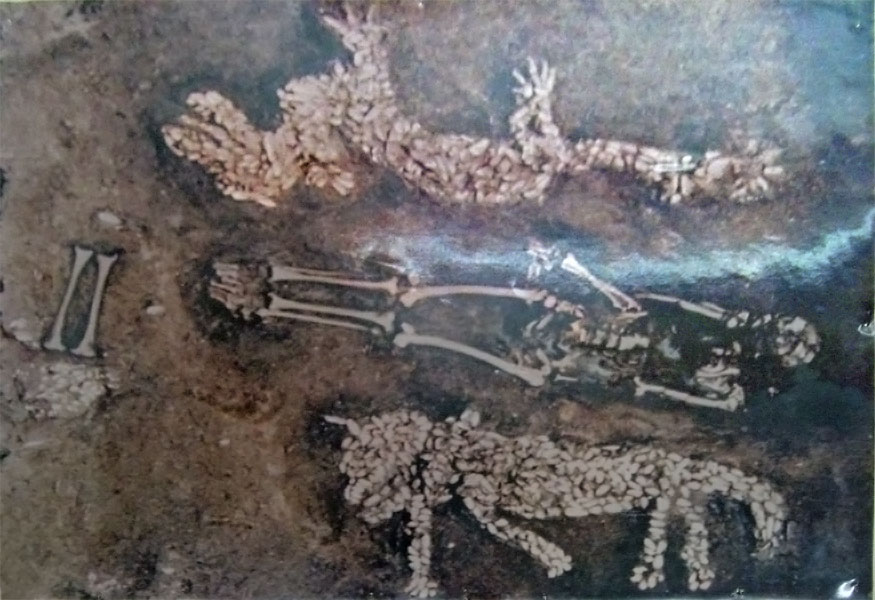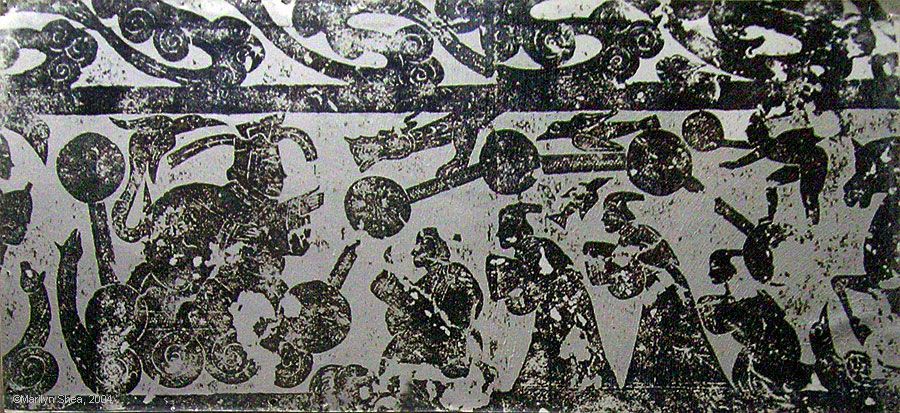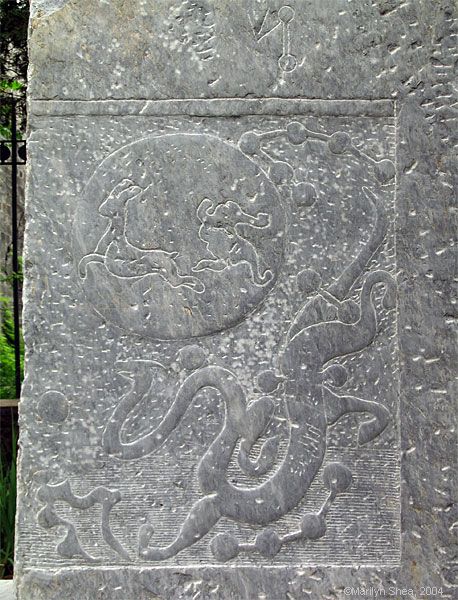 |
| This grave is number 45 at the Xishuipo Puyang site in Henan Province. The Neolithic grave dates to around 5300 BC and may have been that of a king. The Azure Dragon and White Tiger can be seen keeping the skeleton company. The Vermillion Bird is out of sight. The symbols may have been buried with the king to protect him or as symbols of his status in the heavens. The form of the grave itself is in the shape of a crown. The ancient crown got its shape from the belief that heaven was composed of six concentric circles divided by seven curves.
Below is an engraving made 5000 years later during the Eastern Han Dynasty (25-220). It is in the Wukaiming grave, a part of the complex at Wuliang Ancestral Temple in Jiaxiang, Shandong Province. The carving shows the Big Dipper, a simplified form of the Emperor's cart a constellation or xiǔ. Next to the sixth star from the left, there is a small star. It is an accurate depiction for the time. The inclusion of celestial features in graves is found all over the world in early societies that developed astronomy and astrology. The belief that the cyclical occurrences in nature had some sort of plan and a spirit or power to guide them led man to try to discover ways to appease, to control, or to influence those powers. The Chinese belief that there was a direct link between the celestial plan and the imperial house was one of the essential ingredients for the continuous dynastic system with consistent heritage from era to era. To cut ties with the heavens meant cutting the government off from legitimacy. Even in death, the king prepared to assume his rightful place among those who had been given the mandate of heaven. |
 |
 |
| The above stone was unearthed at Nanyang, Henan Province and depicts the 16 stars of the Azure or Green Dragon constellation (苍龙 Cāng Lóng). The Azure Dragon occupies the eastern sky when the Big Dipper is above. It is one of the four constellations defining the horizon. Above the constellation, the moon is pictured with a rabbit and a three toed toad.
Both the toad and the rabbit are the traditional symbols of the moon. The toad is actually a beautiful woman in disguise. In ancient times she lived on earth with her husband. Her husband was a famous archer who saved the earth from dragons or falling stars. The gods gave him an elixir for immortality, but his wife, Chang O, swallowed it instead. Both her husband and the gods were angry and she fled to the moon. There she found a rabbit and a Cassia tree; both are symbols of fertility and long life. There are two versions of the story at this point. Either the rabbit was mixing elixir for long life or she had the elixir she had taken from her husband. Either way, she asked the rabbit to help spread the elixir to all the people of earth. In the end, she settled down in a Jade Palace on the moon and can be seen at her best and brightest at Moon Festival. Eating Moon Cakes during Moon Festival is one way of sharing the elixir and living a long life. |
http://hua.umf.maine.edu/China/beijing2.html
Last
update: May 2007
© Marilyn Shea, 2007